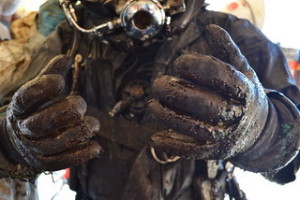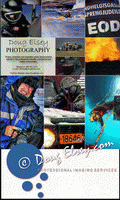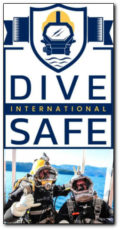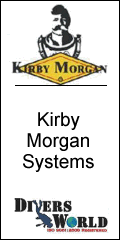Z275.2-15 Interpretation Note for Diving in Contaminated Environments
By CADC Admin ~ July 8th, 2016. Filed under: CADC MAG, Safety, Standards and Regulations.
 (Reprint from CADC Magazine – Spring Summer 2016) The latest Occupational Safety Code for diving operations contains revised instructions for contaminated water diving (CWD). The revised code contains a lot of new information and, perhaps inevitably, its publication raised as many questions as it answered. In direct response to industry feedback the CSA Z275 technical committee tasked a working group to produce an interpretation (guidance) note to augment and explain the new standard. The resulting interpretation note was approved by the committee and published in February 2016.
(Reprint from CADC Magazine – Spring Summer 2016) The latest Occupational Safety Code for diving operations contains revised instructions for contaminated water diving (CWD). The revised code contains a lot of new information and, perhaps inevitably, its publication raised as many questions as it answered. In direct response to industry feedback the CSA Z275 technical committee tasked a working group to produce an interpretation (guidance) note to augment and explain the new standard. The resulting interpretation note was approved by the committee and published in February 2016.
A key change is the expansion of CWD categories to match internationally recognized definitions or, in plain speak, to allow everyone to talk the same language. There are now four categories ranging from baseline/benign (Category 4) up to the most serious (Category 1). Significant new information is in Table 8 – for the first time this table matches these categories with minimum standards of protection and specific equipment requirements. Not surprisingly much of the interpretation note deals with Table 8.
Another change in approach is that SCUBA is permitted for diving in Moderately Contaminated Water (Category 3) when a full risk assessment indicates that this is an appropriate option. Even then the use of SCUBA is heavily “ring-fenced”: it is not a declaration of open season for cowboy operators! SCUBA is simply a “tool in the tool box” and the equipment set-up is deliberately prescriptive, meaning that – among other things – use of a half-mask and separate regulator is simply not acceptable, period. There are of course many other factors to consider.
The default scenario for CWD, where the contamination is unknown, remains Category 2 and this requires surface-supplied diving techniques to be used with diver encapsulation in a CWD drysuit and yoke-attached helmet. This scenario includes all commercial ports in Canada unless the risk has been fully qualified. For the curious, diving is not recommended in Category 1 contamination.
In summary, the revised standard takes account of advances in knowledge, techniques, and technology. Above all, diver safety has not been compromised. It is important that all of us in the industry understand both the standard and the interpretative guidance. The interpretation document can be downloaded here.Z275.2-15 - Interp No. 1 - Diving in Contaminated Water
(Jonathan Chapple is a former UK Royal Navy diving officer and is currently Director, Military & Professional, with Aqua Lung Canada, as well as Chairman, DCBC. )






